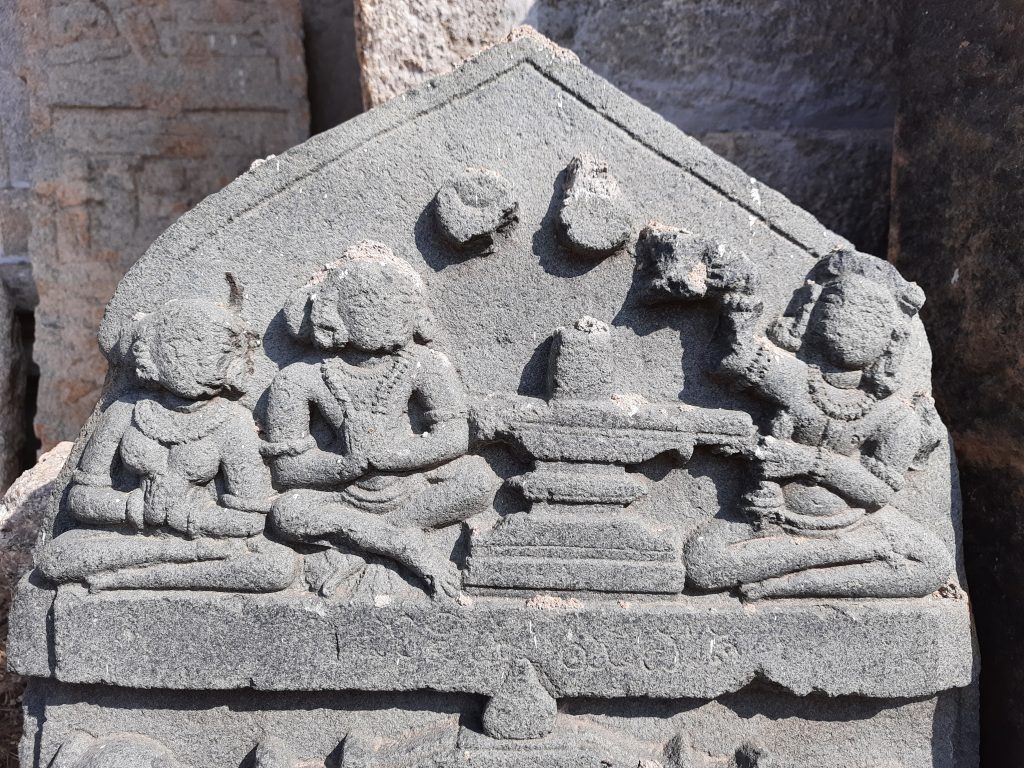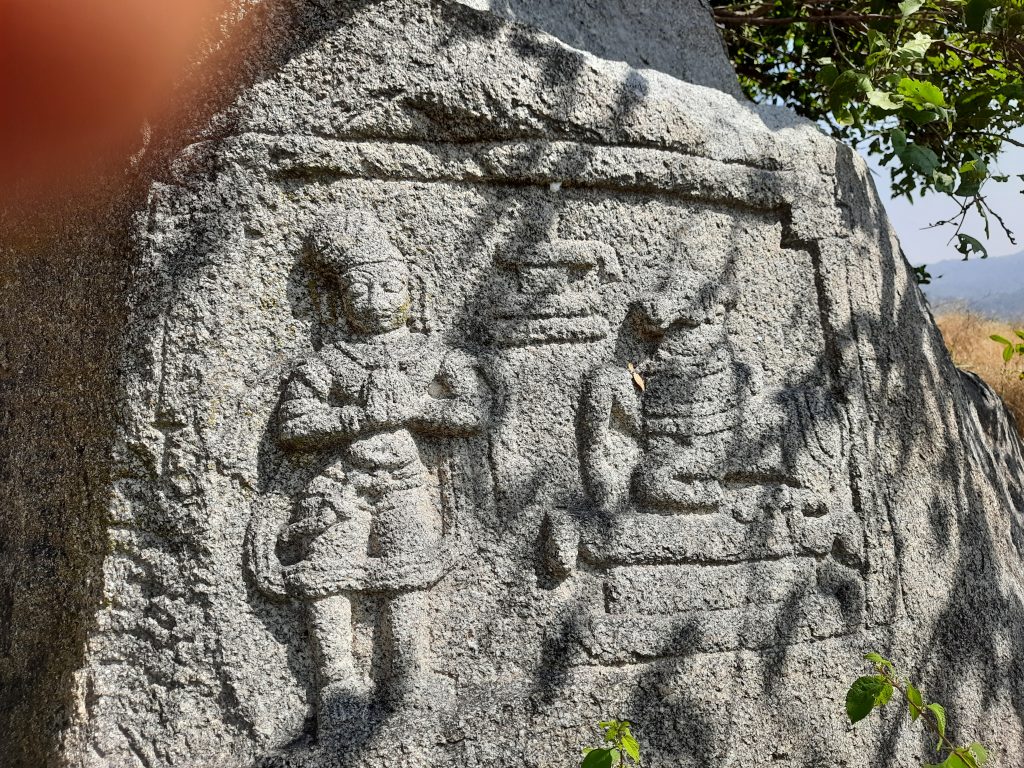
Nidugallu is located in the Pavagada taluk in Tumkur District, state of Karnataka and it is approx. 180 km from the state capital, Bengaluru.
The history of Nidugallu dates back to the Iron age of medieval timeline, later it was ruled by the Gangas, Chalukyas, Cholas, Hoysalas and the Vijayanagara kingdom, Hyder Ali & Tippu sultan of Mysuru kingdom and later it got merged into Mysuru state.
This place was also called Neelanjanagiri, as it was the capital of “Nidugal Cholas” as they are feudatory to the Kalyani Chalukyas. Also known as Bhiravanakote, Basavanokote is prescribed in many inscriptions.


These Nidugal Cholas, they are claimed as descendants from the legendary Chola king of Karaikal & they bore titles such as Lord of Uraiyur ( Early Chola’s capital )
This dynasty ruled parts of Karanataka during the 12th and 13th Century and they made this hill fortress as stronghold rule.
Also, this dynasty frequently changed their capital – Henjeru (Penjeru) the present Hemavathi of Anantapur Dist. , after that got shifted to Nidugal and later to Govindawadi (Govindawada) of Anantapur district on the banks of the river Vedavathi.
As per the inscriptions, the King – Irungola deva Chola maharaja ruled this prosperous capital in the mid of the 12th Century.
But now one can see only the damaged and ruined fort and ancient temples, it is pathetic to see a once renowned and remarkable site which had glorified even before the Vijayanagara dynasty in this ruined state.
As the history traces back to the iron age, the Archaeology department should take jurisdiction over this site and excavate the concealed history of this fortress hill.
Further to this rule, the fort gained prominence in history during the period of Vijayanagar rule and the local chieftains ( Palegars) who were vassal to the Vijayanagar dynasty.
At the base of the hill, one can find a lot of ancient temples of Someshvara, Veerabhadra, Shree Durga, Ramalingeshwara, Rama tirtha, Laxmi Nrusimha temples, and so on & an ancient Basadi of Parshvanatha built during the Irungola deva period.
One can witness many inscriptions pertaining to old Kannada and Hero stones ( Veeragallu ) commemorating the martyred soldiers who lost their lives during the war, installed as a token of gratitude by the then rulers.

Also are seen sati stones pertaining to an ancient sati system where the wife of the martyred soldier/king used to voluntarily enter the funeral pyre to attain salvation.

The fort was built by using sand, mud, limestone and it remains strong more than the present architecture masonry works depicting their strong foundation in civil engineering.
The trekking path to the hill summit proves a little difficult as there are no well-formed steps and in the mid-stretch of the hill, one has to endure a difficult path.
During the first half trail, one glances at a ruined accommodation for the soldiers made of stone and & mortar.
At the entrance to the fort, one can come across bunches of Seethapala ( Custard apples) seen abundantly in the hill surrounding, Also this place is habited with peacocks, bears in the forest terrain.
On the hilltop, one can witness a temple dedicated to Lord Shiva – Rama lingeshwara, as per the inscriptions the linga was brought from Kalahasti, while entering this temple there is an inscription in old Kannada carved on a black granite stone. Adjacent to this temple there is a freshwater pond, used in those age days for portable water.
One can witness many masonry works of soldier’s shelter, Granary – built using stones, mortar, and limestone.
It is a spectacular view from the hilltop, during the monsoon period to see the thick green shrub forests covered with dew, One can feast their sight and mind if visited in August to October.
Here, one notices few shattered Cannons mounted on a bastion, as per the information these Cannons were brought from Srirangapattana by Hyder Ali had conquered this hill by defeating the local Palegar while on his way to assault Chitradurga fort.
On the summit of the hill, there is a Nandi statue, beside that there is a fire bowl. Fire will be kindled in the bowl during Shravanamasa ( Hindu’s holy month especially in August month ), Also one happens to feast on the last Monday of Shravanamaasa a big fair here popularly known as Basavanna jaathre (Festival)

The scenic beauty of mother nature is beyond words and one has to visit this site to experience the ecstasy.
This fort has firmly witnessed the passage of time from the Iron Age till the happening of Mysuru state.
I am requesting the Government of Karnataka and the Archaeological Survey of India to give more effort to save this monument and bring to light more information hidden about the past glory of this fortress hill.
My plea to the concerned in the Government to include these happenings and history in the curriculum for study and understanding by our future generation of students in the subject of history
More importantly, we have to protect this monument from many anti-social activities and treasure hunters, as this fort carries enormous hidden information from the Iron Age to Medieval history.

































Nice narration.. good going Shiva..
Congrats Shiva in your attempt to bring to light such hidden and less exposed facts and historic sites !
May the sail be sailing forward 💥👍🙂
Thank you for explaining about this fort
“Thank you, I really appreciate you taking the time to express that.”
Stunned after seeing this Extraordinary Historical place in Pavaghada o Karnataka, India..
How fresh air, Thanks for your Excellent Efforts to Reach All..